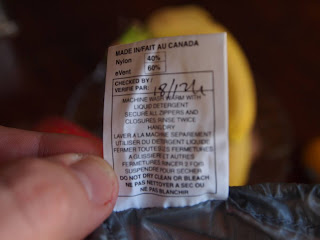There are always some considerations when planning out a stay.
- What is the season?
- What is the weather forecast?
- Will I be alone or are there others coming too?
- How much activity am I planning on doing?
- How isolated will I be?
- What is the terrain like?
Sleep System
I always put a great deal of thought into what sleeping gear to take. Since it will be so cold, I opted for a self inflating mattress, my winter bag /with a comfort rating of -18 C), my trusty pillow, bivy bag and poly sleeping bag liner. Everything but the sleeping bag and mattress is standard kit and accompanies regardless of season.
Food
I always like to take a little extra food when it's cold. This consists of a hearty meal for dinner (3 packets of noodles mixed with milk powder and cantarell soup), teabags, sugar, coffee, chocolate bars, porridge with raisins and powdered milk for breakfast and my thermos. I keep things simple and use a standard anodized aluminium 1 litre pot with a lid. Since there was loads of snow I didn't bother bringing water. All the food and the pot goes into a water proof bag to keep things dry and organised. I fill the thermos with water before I pack it. If I was to be going above the tree line, then I'd pack a stove too. I use a Coleman Feather 442 because it's robust and can be run on unleaded which is cheap.
I use a plastic spork made by Sea to Summit:
http://nl.wikipedia.org/wiki/Bestand:Sea_to_Summit_Spork.jpg
I highly recommend this spork as it has a good handle length and is tough. I have dummy chorded mine so I don't lose it and can hang it from a branch while I cook or wash up. I don't worry about a bowl as I eat straight from the pot and the cup I use is the thermos lid.
Miscelaneous
I always take a first aid kit. This kit is able to deal with splinters to major cuts and sprains. If you take an axe with you, consider beefing up your kit so that if you chop your leg, you can manage the injury. I also include pain killers and plastic bags so that a lost digit can be sealed and hopefully saved. I also have a personal hygeine kit. This has toilet paper, a tooth brush, bicarbonate of soda which can be used as tooth paste (plus a multitude of other things), matches, a lighter and a disposable poncho. I always take my headlamp too and check the batteries before each outing.
Cutting tools
People tend to go nuts when it comes to knives and axes. I don't really need a machete, folder, fixed blade, scalpel and Swiss Army knife, so I just carry 1 knife. It's a Scandinavian style knife I made that is small, light and sharp. I also take an axe and because it's cold, I take my 26" axe as it processes firewood much faster than a hatchet.
Camera
Last but not least I always take a camera and my mobile phone. My camera is just an old Cannon. I always check it has fresh batteries and suitable storage space on the SD card. I make sure my phone is charged too.
Because it was going to be cold, layering was necessary. I had a poly T shirst, wool sweater and a jacket made of GX-2000 over the top. This was a warm, dry and wind proof combination. I wore poly longs and teflon coated cotton pants. I also used my winter shoes which are water proof and have a woolen inner boot. I expected to have to walk through some snow so I wanted to be prepared. I also took wool socks and a woolen beanie.
When I pack my gear, I make sure that the heaviest items are in the small of my back, as close to my body as possible. This means that I am not going to feel "tippy" because of being top heavy or have to lean forward because everything is at the bottom of my pack. I also tighten up the compression straps to make sure everything is secure and the bag sits securely on my back. My first aid kit is always in my top pocket on the pack and I make sure it can be accessed with 1 hand. This is important, just ask this guy:
http://en.wikipedia.org/wiki/Aron_Ralston
People tend to like the latest and greatest back packs too. I am content with my Katmandu Interloper which is 75 +10. For some reason it didn't get great reviews but it is made from Cordura, is water resistant and very adjustable. I have taken mine around the world twice and it's seen some really rough treatment. In 8 years I have no complaints. They can be bought cheaply and in my practical experience, are a great pack.






















































